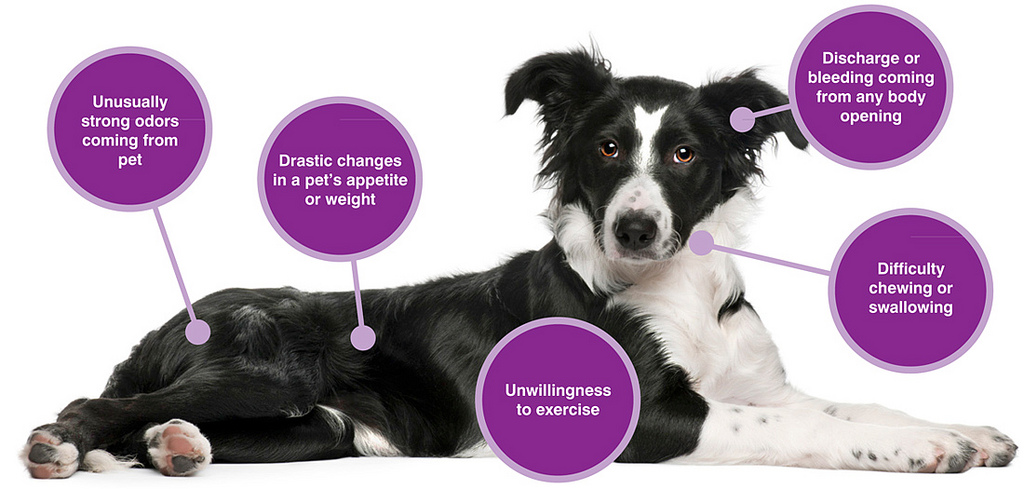Pet Cancer Awareness Month, a time to spread awareness of cancer in dogs and cats and help early detection of the symptoms. Cancer is the leading cause of death in cats and dogs. The first step in keeping your pet healthy is knowing the symptoms your pets may exhibit if they develop the disease. Being attentive and informed can help you and your vet diagnose and treat your pet sooner.
To help pet parents protect and be proactive with pet health, Goodnewsforpets has compiled the top 10 warning signs of cancer in dogs and cats.
- Lumps and Bumps — Not every lump or bump is necessarily cancerous, but consulting with your vet is the only way to be sure. If the lump is growing or not resolving itself, contact your vet and he or she will do a biopsy to determine the contents of the bump.
- Abnormal Odors — Foul odors from any of your cat or dog’s orifices and/or body parts may be a cause for concern. Cancers of the mouth, nose, or anal regions can cause your pet to emit offensive odors.
- Abnormal Discharges — Discharges such as blood, pus, vomit, diarrhea, and any other abnormal substance being excreted from your pet’s body should be checked out by a veterinarian immediately. A bloated or distended stomach could also be a sign of internal discharge.
- Non–Healing Wounds — Lacerations or sores that do not heal within a normal time range on the surface of your cat or dog’s body may indicate infection, skin disease, and possibly cancer.
- Weight Loss — Sudden weight loss in cats and dogs not on a diet can be an indicator of many diseases and illnesses. If coupled with another warning sign of cancer, you should contact your vet right away and inform him or her about your pet’s symptoms.
- Change in Appetite — While a lack of appetite in dogs and cats can be an indicator of many things, they never stop eating without a cause. Not necessarily a sign of cancer, a decrease in appetite can indicate an oral tumor, which would make it painful and difficult for your pet to eat and swallow.
- Coughing or Difficulty Breathing — Although symptoms of heart and lung disease, coughing and abnormal breathing can also indicate cancer. This symptom will most likely occur if the cancer in your pet’s body has metastasized into his or her lungs.
- Lethargy and Depression — If your pet has cancer, there is a chance that he or she will suffer from depression and sleep more, become less playful, and be less willing to go for walks. Although lethargy or depression in dogs and cats can set in with any illness, it is commonly seen in pets that have cancer.
- Changes in Bathroom Habits — Any changes in your pet’s bathroom habits including difficulty using the bathroom, frequent bathroom use, and blood in urine or stools are potential warning signs that cancer has developed in your pet.
- Evidence of Pain — Limping or other evidence of your dog or cat in pain when he or she is active, or if the pain is too great for them to be active, can be indications of cancer of the bone.
While no one sign positively indicates cancer, a pet displaying two or more of these symptoms should be taken to the veterinarian for an exam so that he or she can be properly diagnosed and treated accordingly, because early detection can make all of the difference in the case of a positive diagnosis. A few of these symptoms are very similar to signs of other distresses or diseases such as diabetes. This information is purely for informational and educational purposes, if you have any concerns please consult your veterinarian.
Feature photo by VPI Pet Insurance, used under a creative common license. No changes were made.

